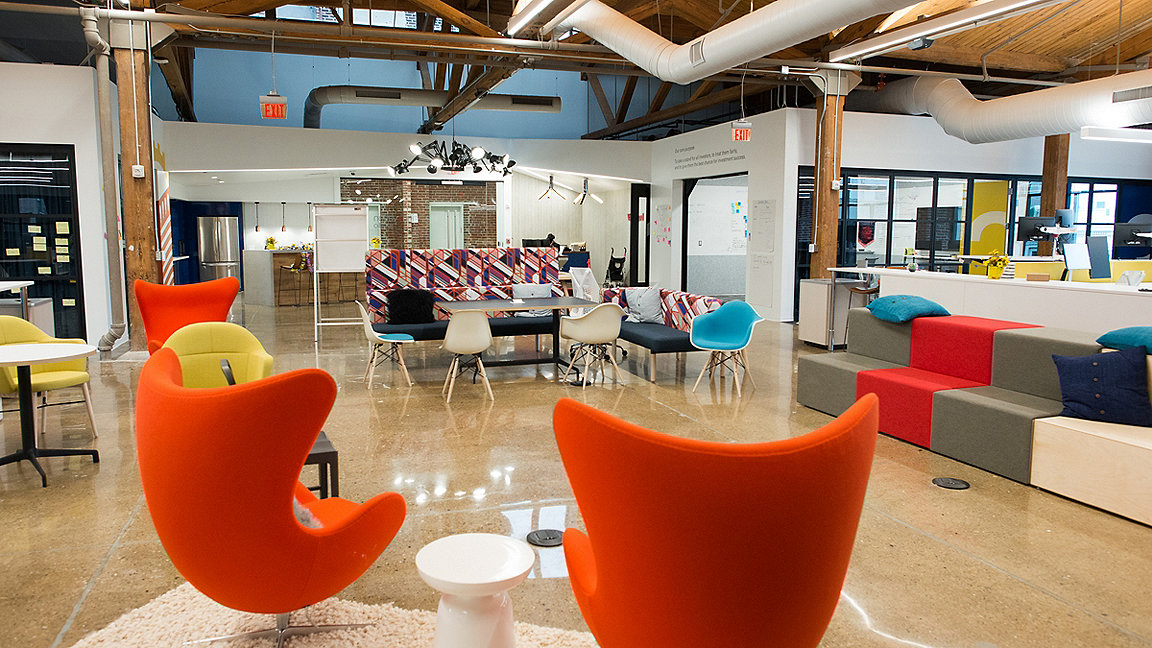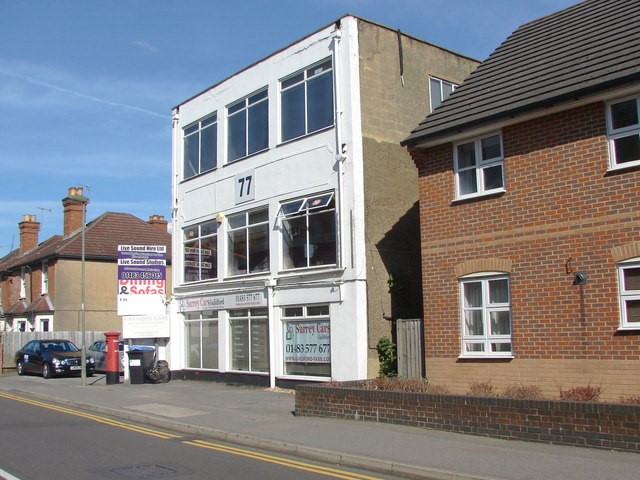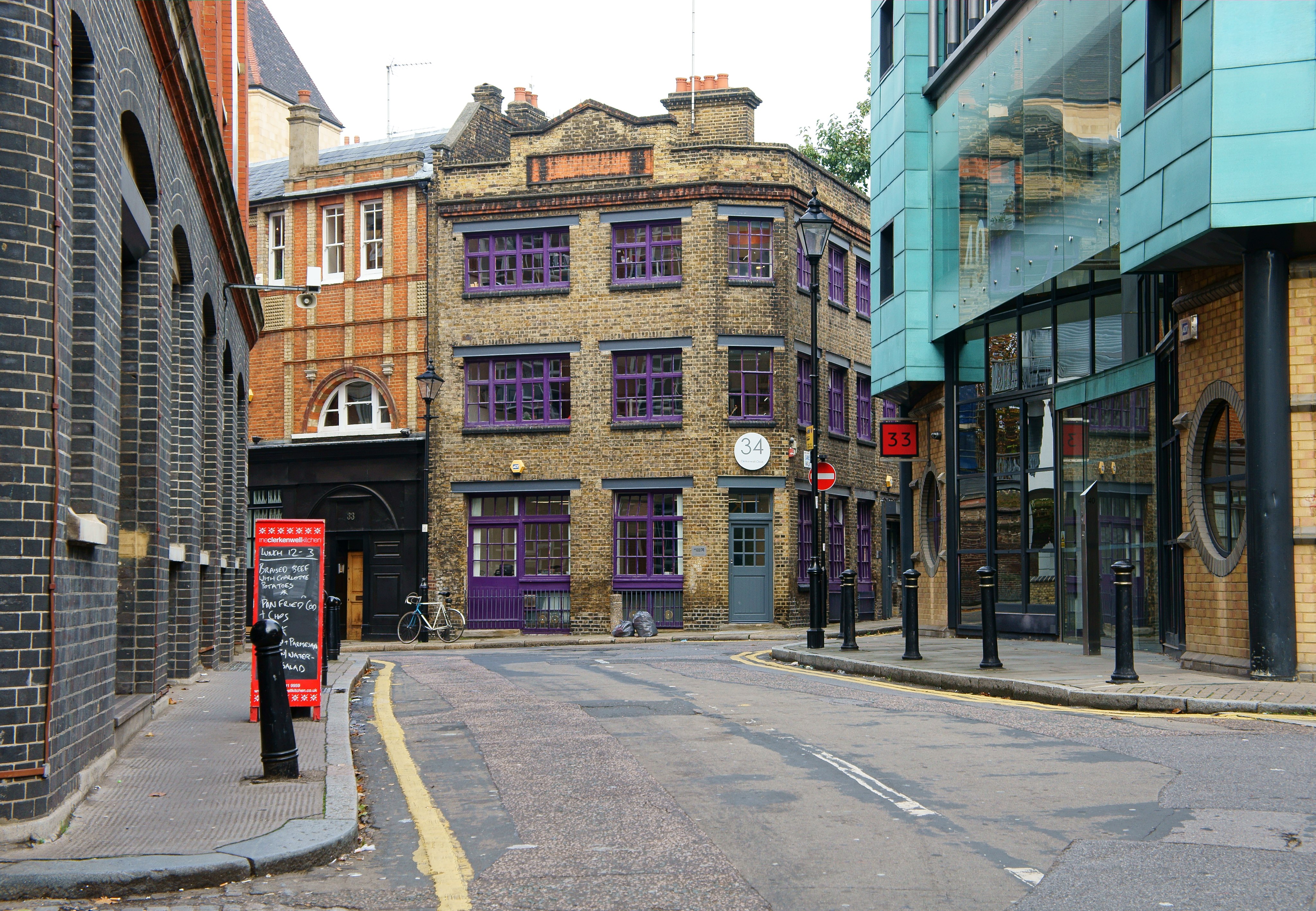
The digital technology sector is making an increasing contribution to the UK economy; according to the government, the sector accounted for 7.7% of the UK economy in 2018, contributing some £149bn and growing at a rate nearly six times faster than the economy as a whole. The sector is also distinctive for its differentiation into niches, many of which are spatially identifiable in the form of business clusters.
A digital technology cluster is defined by a 2015 Tech City report as 'a critical mass of digital technology companies [that] forms in a region'. The report adds that clusters of companies interact formally – for example by trading or forming partnerships – and informally – for example, through networking or socialising.
Clearly location matters. Why is this, what are the benefits of clustering, and what is the significance of the built environment? Surprisingly, there have been few studies about the built environment needs of digital technology niche sectors. To this end, my ongoing doctoral research seeks to explore these clusters, the significance of the built environment, and how the real-estate professions could best support them.
The research focuses on four clusters: the digital games industry in the respective clusters of Guildford and Clerkenwell, and the two cyber-security clusters of Malvern and Shoreditch. The outputs were based on more than 40 interviews with technology firms and some 20 interviews with commercial agents and other land professionals.
The clusters exhibited high levels of face-to-face interactivity and information flows, and enabled sharing of resources as well as an association with a particular location. The mixture of benefits varied by cluster, which in turn depended on the business models and working practices of the niche sector in question and their distinct, respective preferences for appropriate workspaces. Historical analyses of each cluster showed that their development related directly to the timely availability of workspaces appropriate to the respective niche, and to an individual business's stage of development.
The Hollywood of Games
Guildford is home to between 1,000 and 1,500 professionals and 63 firms working in digital games, occupying various buildings close to the town centre and railway station.
High-risk and fast moving, the indie developer business model is based on project-style work. Firms depend on quick access to skilled professionals; and likewise, professionals need to keep up to date with job opportunities. The cluster has become an effective labour pool and employment information-sharing mechanism, with interactivity engineered through proximity.
‘Guildford town centre and the associated characterful workspaces then became synonymous with being a credible games developer’

This interactivity is probably responsible for Guildford's competitiveness as an industry hub: now dubbed the Hollywood of Games, it is home to many celebrated businesses. Success begets success, which in turn attracts new businesses and the clustering cycle continues.
The built environment has played a central role in this. A conservation area and flood protection policies have helped to maintain an unusually large supply of semi-industrial space and small offices in the town centre and the vicinity of the station, which might otherwise have been lost through permitted development rights to residential conversions. This has enabled the physical proximity of different businesses.
As games studios fluctuate in size, these small, quirky, flexible and relatively cheap spaces have provided ideal bases. The town centre and the associated characterful workspaces then became synonymous with being a credible games developer.
The right conditions
The timely availability of appropriate workspaces was also central to the cyber-security clusters of Shoreditch and Malvern.
A third of central London's 60 or so cyber-security companies are based in Shoreditch and the surrounding area. They have generally been the marketing and servicing arms of development companies based overseas; but increasingly, they work for firms located in provincial areas of the UK. In this case, client relationships are all-important, so proximity to the City of London and in particular financial organisations is key.
The clustering of the industry in London has coincided with the growth of co-working spaces. This is a serendipitous occurrence, because cyber professionals require limited but flexible workspace, spending most of their time in their clients' offices or entertaining them in the technology-dominated environment around Old Street.
The co-working spaces of Shoreditch provide such companies with a simple base for occasional staff meetings and an address to give them some credibility – an enormously important consideration for cyber-security businesses, which find themselves competing with the likes of Silicon Valley firms in a global labour market.
Dedicated defence-led security space
Malvern was host to 8,207 digital jobs, according to 2017 figures from Tech Nation, making it the highest concentration in the country.
Many of these firms are located in the Malvern Hills Science Park. Unlike the quirky town centre spaces preferred by games companies, cyber-security firms prefer the functionality of this site's facilities and its out-of-town location.
The park was built as a joint project between QinetiQ, Malvern Hills District Council, Worcestershire County Council and the West Midlands Regional Development Authority in 1999. The aim was to provide space for companies founded as a result of various rounds of privatisation, which began with QinetiQ's development from the Defence Evaluation and Research Agency.
The timely availability of this preferred workspace led to the embedding of these firms in Malvern, with the result that Malvern 'now holds the UK's largest cluster of cyber-security firms' according to the National Science and Innovation Audit 2019. Local companies in this line of work consider location in the park to be synonymous with their niche sector and central to their credibility.
Notably, the park is fully occupied, which means that the expansion needs of burgeoning cyber-security businesses are frustrated. The town combined with Worcester is known for both its high incidence of home-working professionals and also start-up companies.
While undoubtedly working from home may suit many cyber-security professionals, it could be that more companies would be encouraged to grow if the right type of space were made available for them to flourish. The irony is that there appears to be little or no developer interest in providing more workspace for this niche sector in the town.
Identity and location
The identification of niche-sector firms with their workplaces was an unexpected finding in my research. It was clear that location is often essential to companies' branding, and part and parcel of their appeal to both prospective and existing employees.
Businesses increasingly want to align their corporate cultures with their locational strategies, projecting an image of a certain quality of life and working environment. Reflecting or reinforcing this trend are the numerous surveys about the best places to work, which encompass both the attractiveness and healthfulness of the work environment.
I found during my research that the relationship between workplace and company identity was one of the primary factors in the formation of the clusters. While all the case studies demonstrated as much, the Clerkenwell games cluster was perhaps the best example.
My research showed that 13 games companies located in the area to associate themselves with its creative and media heritage, and enjoyed taking space in the protected historic workspaces often housed in the former printing works which are associated with Clerkenwell. In turn these workplace preferences have led to the foundation of a developing games cluster.
As for the other clusters, the location and the workplaces available there provide them with the credibility that helps attract and retain employees, as well as appealing to potential business partners and investors.
‘My research showed that 13 games companies located in Clerkenwell to associate themselves with its creative and media heritage’

Branding the workspace
The branding efforts of the firms extend into the fit-outs of the workspaces. This is especially associated with the break-out stage in company development, when they expand from their small start-up phase into a more mature sizeable business operation.
In the case of the games developers and cyber-security firms based in Clerkenwell and Shoreditch respectively, this often meant that they found they had to move out to cheaper areas so they could afford distinctive fit-outs. In several cases, companies had to juggle the advantages of cluster location with their desire to stamp their identities on their workplaces and create spaces to suit and retain their employees.
One CEO who moved their business from Clerkenwell to London Bridge explained: 'We've been here two and a half years now. We looked at places in Clerkenwell and Shoreditch, but nothing was quite right, and then we ended up finding this place down here through a friend of a friend.
'For us, it became obvious that we couldn't do something that was too new-build or too corporate; we needed [lower] rent because we knew we were going to have to spend a lot of money on renovating the space.
'The rent was about two-thirds of what it was in Shoreditch. I think we spent about £150,000 on renovating the space – it was expensive, but we wanted the vibe. We wanted to have these different kinds of area that people can work at.'
This dilemma was not so evident in the provincial clusters of Malvern and Guildford, where firms' association with the respective towns overrode any thoughts of moving away. This complex relationship between spatial identity and workspace supply may be the reason the London clusters appeared less cohesive than those in the provinces.
Attracting tech tenants
These niche-sector workplace preferences have clear implications for the workspace market, including the way that co-working spaces and other developments should be finished. Furthermore, the associations of a particular area may also act as a major draw for firms which will still need to have an association with workplace and a cluster despite enforced home working during the pandemic.
It could be that some firms will operate more remotely in future. But it is likely that, in one way or another, workspace location and address will remain extremely important, with clusters of digital technology businesses continuing to thrive, to the benefit of the digital economy as a whole.
Marion Payne-Bird MRICS is a planning and local economic development consultant and a PhD candidate at the University of Southampton
Contact Marion: Email
Related competencies include: Planning
